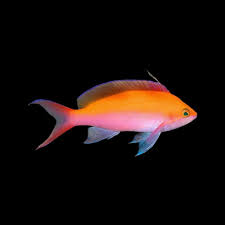The Dragon Symbolism in Ivory and Gold Porcelain Works

The dragon, one of the most revered and powerful creatures in mythology, has long been a prominent figure in art and culture. Its representation can be found across various forms of visual art, from paintings and sculptures to textiles and pottery. In particular, the dragon holds a special place in the world of porcelain and ceramic art, especially in the context of ivory and gold porcelain. This article delves into the symbolism of the dragon in porcelain works made from these luxurious materials, exploring its cultural significance, the artistic techniques involved, and the historical context of these works of art.
The Symbolism of the Dragon in Art
Dragons are mythical creatures that have appeared in the myths and folklore of various cultures across the world. In Chinese mythology, dragons are revered as powerful beings that control water, rainfall, and other essential elements. They are often associated with strength, wisdom, and good fortune. In contrast, Western dragons are often depicted as fearsome, destructive creatures that hoard treasure and guard sacred places. However, regardless of cultural interpretation, dragons are generally viewed as symbols of power, mysticism, and protection.
In many artistic traditions, including ivory and gold porcelain works, dragons are not only symbols of power but also represent the forces of nature and the cycle of life. These creatures are seen as guardians, protectors, and intermediaries between the earthly realm and the divine. The dragon’s ability to control both natural forces and the spiritual realm has made it a central figure in the art and craft of porcelain-making, where it often symbolizes protection, wealth, and prosperity.
The Cultural Significance of the Dragon in Porcelain Art
Porcelain, particularly ivory and gold porcelain, has long been a symbol of luxury and refinement. Known for its delicate texture, smooth surface, and the brilliant sheen it attains when fired, porcelain was historically reserved for the wealthiest classes and royalty. The dragon’s image, with its strong association with imperial power and divine protection, became a common motif in porcelain works created for emperors, nobility, and temples.
In China, the dragon holds immense cultural and political significance, particularly during the Ming and Qing dynasties. The image of the dragon was often used in porcelain works to symbolize the emperor’s power and divine right to rule. Ivory and gold porcelain works featuring dragons were typically produced for imperial use or as gifts for foreign dignitaries. These pieces often depicted the dragon in its most majestic form, with intricate detailing and gold accents that conveyed the creature’s association with the heavens.
The inclusion of gold in porcelain pieces also holds cultural meaning. Gold, as a symbol of wealth, power, and immortality, was used to accentuate the beauty and grandeur of porcelain works. The use of gold in porcelain art, especially in the depiction of dragons, reinforced the idea of the dragon as a celestial being that transcends the earthly realm and symbolizes the divine power of the emperor or ruler.
In Japan, dragons also play a significant role in the cultural and artistic landscape. Like their Chinese counterparts, Japanese dragons are considered auspicious symbols of good fortune and prosperity. Ivory and gold porcelain works, especially those produced during the Edo period, often featured dragons in dynamic poses, surrounded by clouds, waves, and flames, capturing the fluidity and power of these mythical creatures. These pieces were often created for aristocratic households or used in religious ceremonies, where the dragon symbolized the harmony between the natural and spiritual worlds.
The Art of Creating Ivory and Gold Porcelain Works
The process of creating porcelain, particularly ivory and gold porcelain works, is a meticulous and highly skilled art form. Porcelain is made by firing a fine clay mixture at high temperatures, resulting in a smooth, durable, and translucent material. Ivory porcelain, in particular, is valued for its soft, creamy color, which resembles the color of ivory. The addition of gold to porcelain is typically done through gilding, where a thin layer of gold leaf or gold paint is applied to the surface of the porcelain.
Creating dragon motifs in ivory and gold porcelain requires a deep understanding of both the materials and the symbolism of the creature. The artists responsible for crafting these works often employed detailed techniques to capture the power and mysticism of the dragon. The process begins with the creation of the porcelain vessel or object, whether it be a plate, vase, or figurine. The surface is carefully smoothed and prepared for decoration. Once the basic shape is formed and fired, the artist begins painting the dragon onto the porcelain surface, often using fine brushes and enamel paints to achieve a high level of detail.
The dragon itself is depicted in various forms, often surrounded by clouds, waves, or fire to emphasize its connection to the natural world. In some pieces, the dragon is shown coiled around a pearl, a common symbol of wisdom and enlightenment in Chinese art. The addition of gold highlights the dragon’s importance and celestial nature, enhancing its aura of power and divinity.
The intricate details of the dragon are often complemented by the use of gold to create a contrast between the delicate porcelain surface and the rich, gleaming accents. Gold is typically applied to specific areas, such as the dragon’s scales, eyes, or claws, to draw attention to these features and elevate the overall aesthetic of the piece. The combination of ivory, gold, and dragon imagery results in a stunning work of art that reflects the skill and creativity of the artist, as well as the cultural and symbolic significance of the dragon.
The Historical Context of Dragons in Porcelain Works
The use of dragons in porcelain art dates back to ancient times, but it was during the Tang (618-907 AD), Ming (1368-1644 AD), and Qing (1644-1912 AD) dynasties in China that porcelain works featuring dragons became especially popular. During this period, porcelain production in China reached new heights of sophistication, and dragon motifs were frequently incorporated into imperial porcelain pieces.
One of the most famous examples of dragon-themed porcelain art is the “dragon vase,” a highly prized piece of imperial porcelain from the Qing dynasty. These vases were often decorated with intricate dragon motifs, and the presence of the dragon was seen as a symbol of the emperor’s power. Gold accents were used to enhance the richness and prestige of the pieces, further emphasizing their association with the divine right to rule. These vases, along with other porcelain items adorned with dragons, were produced in royal workshops and served as gifts for high-ranking officials, as well as for use in ceremonial and religious contexts.
In Japan, the influence of Chinese porcelain art was strong, particularly during the Edo period (1603-1868), when Japan experienced a period of cultural flourishing. Japanese porcelain artists, inspired by Chinese techniques and motifs, began creating their own dragon-themed porcelain works, often combining the dragon with other traditional Japanese symbols, such as chrysanthemums and cranes. These pieces were highly prized by the aristocracy and were often used in religious ceremonies or as decorative objects in the homes of the elite.
The use of ivory and gold in these porcelain works further reinforced the idea of the dragon as a celestial being, transcending the physical world and symbolizing both wealth and spiritual power. The combination of these luxurious materials with the dragon motif served to elevate the status of the piece, making it not only a work of art but also a symbol of the owner’s prestige and connection to divine forces.
The Dragon in Contemporary Porcelain Art
While the use of dragons in ivory and gold porcelain works has its roots in ancient traditions, the symbolism and artistry of the dragon continue to inspire contemporary porcelain artists today. In the modern era, artists often draw on traditional motifs while incorporating new techniques and materials to create innovative works of art that reflect both the cultural legacy of the dragon and the contemporary world.
Contemporary porcelain artists may use the dragon as a symbol of personal power, transformation, or connection to the natural world. The symbolism of the dragon in modern porcelain works may be interpreted in a variety of ways, from representing personal growth and resilience to symbolizing the struggle between chaos and order. The use of ivory and gold in modern pieces may reflect both a reverence for traditional craftsmanship and an appreciation for the beauty and significance of these materials.
In addition to traditional porcelain objects, modern artists may also create dragon-themed porcelain sculptures, which combine the fluidity and power of the dragon with the delicacy of porcelain. These sculptures, often created through innovative firing techniques, serve as both works of art and expressions of the timeless symbolism of the dragon.
Conclusion: The Enduring Legacy of Dragons in Ivory and Gold Porcelain
The dragon’s presence in ivory and gold porcelain works is a testament to the enduring power and symbolism of this mythical creature. Throughout history, the dragon has served as a symbol of strength, wisdom, and divine protection, and its depiction in porcelain art reflects its importance in both the spiritual and material worlds. The use of ivory and gold in these pieces elevates the dragon motif, emphasizing its celestial nature and its connection to the forces of time, nature, and the divine.
From the intricate dragon vases of the Qing dynasty to contemporary porcelain sculptures, the dragon continues to inspire artists and collectors alike. Its timeless symbolism, combined with the luxurious materials of ivory and gold, ensures that the dragon will remain a prominent and revered figure in porcelain art for generations to come.

